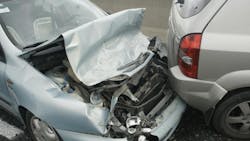For the first time in nearly a decade, preliminary 2016 data from the National Safety Council (NSC) estimates that as many as 40,000 people died in motor vehicle crashes last year – marking a 6% increase over 2015 and a 14% increase over 2014.
In a conference call with reporters, Deborah Hersman, NSC’s president and CEO, said the 40,000 crash fatality statistic for 2016 “cannot be our new normal; If a Titanic-sized ship sank every day for 11 days, we would overhaul maritime safety. Where is our outrage over losing 100 people every day on our roadways? We know what to do but we just are not doing it.”
Hersman added that the top three “killers” in motor vehicle crashes remain speed, alcohol and distracted driving, yet there seems to be no public intent to change those behaviors.
“Our complacency is killing us. Americans believe there is nothing we can do to stop crashes from happening, but that isn’t true,” she added. “The U.S. lags the rest of the developed world in addressing highway fatalities. We know what needs to be done; we just haven’t done it.”
Other data laid out from NSC’s research includes:
- An estimated 4.6 million additional roadway users were seriously injured in motor vehicle crashes 2016;
- The estimated cost to society from motor vehicle crashes topped $432 billion last year;
- Although 83% of drivers surveyed by NSC believe driving is a safety concern, a startling number say they are comfortable speeding (64%), texting either manually or through voice controls while driving (47%), driving while impaired by marijuana (13%), or driving after they feel they’ve had too much alcohol (10%).
“Despite incredible safety improvements in technology, education campaigns and legislative action, we suffered 40,000 fatalities on our roadways last year – the deadliest year on the nation’s roads since 2007,” Hersman noted.
“What has not changed is our human fallibility: when we drill down into causation, we see an increase in distracted driving fatalities (3,000), alcohol-related fatalities (10,000) and unbelted fatalities,” she pointed out. “Nearly half of all motor vehicle fatalities were unbelted.”
As a result of the increases in motor vehicle fatality numbers, Hersman added that NSC plans to call for a number of “immediate” highway safety policy initiatives, including:
- Mandatory ignition interlocks for convicted drunk drivers and better education about the nature of impairment and when it begins.
- The installation and use of automated enforcement techniques to catch speeders.
- Laws banning all cell phone use – including hands-free – should extend to all drivers, not just teens. States with existing bans need to upgrade enforcement from secondary to primary.
- Seat belt laws should be upgraded from secondary to primary enforcement and restraint laws should extend to every passenger in every seating position, in all kinds of vehicles.
- All new drivers under 21 – not just those under 18 – should adhere to a three-tiered licensing system.
- Automotive safety technologies that have life-saving potential should be standardized and give accelerated deployment, inlcuding blind-spot monitoring, automatic emergency braking, lane departure warning and adaptive headlights.
- Motorcycle helmet laws should be passed or reinstated. NSC noted that 5,000 motorcyclists were killed in 2016
- Communities and municipalities should adopt comprehensive programs for pedestrian safety, as 5,300 died in motor vehicle crashes in 2016.
About the Author
Sean Kilcarr
Editor in Chief
Sean Kilcarr is a former longtime FleetOwner senior editor who wrote for the publication from 2000 to 2018. He served as editor-in-chief from 2017 to 2018.
